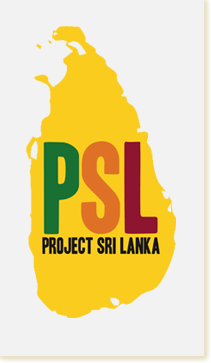End of Week Summary Diary
From the observations we have made on our travels it is clear that Gilmans’ report was correct when it clearly stipulated that there was no dominant structure and no definition of Eco village (Dawson, 2006, p13).
Other observations also became apparent, particularly in Sri Lanka, where, whilst the government were involved in many of the eco models we observed, liberty and the feeling of eco models as a form of survival were prevalent, especially in terms of the Tsunami relief amongst the communities in Sarvodaya. Also, given the waste problems Sri Lanka faces, with many of their beaches being off limits due to pollution in the rivers, sustainable bio waste facilities are more of a necessity than a luxury. Many of the eco methods seen in this instance had no reliance upon a costly infrastructure, instead composting methods were able to deal with nearly all the waste arriving into the facility.
Another observation that confirmed much of our pre-reading was the importance of the social dimension. Effective communication, trust and common vision are the foundations of Eco villages and contribute to their success. Decisions are always made in a democratic way and managing conflict is a central skill in Eco villages, so central that they even provide conflict management consultancy services for external companies (Dawson, 2006, p54-55). This was most obvious again in Sarvodaya , were the lack of social co-operation from the fishermen, and unwillingness to change their ways became a major problem. Not only did it mean the eco model had less income circulating from a working community it also showed the failing of the state and NGO in their approach to welfare. The opportunistic nature of many of the residence led to a growing problem of theft in the area.
The key conclusions this report has uncovered can be identified in the areas we observed around energy, community, Finance and technology. Contrary to eco-models in developed countries, eco-models in Sri Lanka do not heavily rely on micro-renewable energies and new technical innovations. Besides, energy independence is not a high priority. This is due to different factors that sometimes make renewables unnecessary and sometimes limit their use. Nevertheless, the local living standards as well as the origin of the grid electricity make these models sustainable, at least not less than those from developed countries. However, changes are currently happening that may modify these findings. As living standards increase, an additional need for energy must be rapidly filled. Plans for non-renewable energy expansion like thermal energies are already in progress in order to quickly increase the electricity supply on the grid. Hence, future sustainability cannot rely on the grid anymore and will need to come more from micro-renewables as well as from energy management, energy saving practices and education of the population. By failing to do so, current Sri Lankan eco-models risk being less sustainable in the near future.
With regards to the role of the community in eco models Sarvodaya provided a unique insight. The charitable nature of the community there has, in spite of many efforts, contributed to a complacent mindset where people (especially fishermen) refuse to adapt and are entrepreneurial-averse. This is certainly something that would warrant further study in a future report. However it would also highlight the work still to be done in creating effective eco villages.
Destined to become a sustainability learning center as well as an organic farm, Samakanda faces serious financial limitations in order to serve the purpose of its foundation. At the moment there is no community inhabiting the 5 acre property, however local Sri Lankans have established agricultural partnerships as way to develop the land and be rewarded by its produce. Individual eco models were having success however, the observations made at the waste recycling plant showed this, as did the work of the government agricultural station, showing not only a demand for ecologically friendly ways to develop the economy, but also a willingness from government to support work in this area.
Financially the start up costs for eco models are high as we have observed. Once established, however, eco-villages are normally cheaper than the normal communities to run. From the analysis of the financial stance of different countries, it is clear that strong support from government is necessary from both a funding and policy perspective. Even in the UK, when Findhorn was established, local government had to take a proactive involvement in the establishment of the community, primarily though investment in infrastructure. Again though, the most difficult part of an eco-project is the start-up fund, when it starts operating, it runs much more efficiently than other communities.
From a technological perspective, although eco villages in Sri Lanka have varied objectives, they still are playing a major role in attaining sustainability in one or the other form through minimum use of technology. The scale on which the information or communication technology is being used could be better utilized even with the poor state of the infrastructure as it stands. The benefits would include improved education within communities and sharing of best practice, both across Sri Lanka and internationally. This, again, is another area that could be looked at in future projects as the government is beginning to invest more proactively in infrastructure, and technologies, such as mobile phones, are developing at such a fast pace, access to such networks is rapidly becoming cheaper and more available. If utilized properly investment in this area could benefit all the eco models dramatically.
